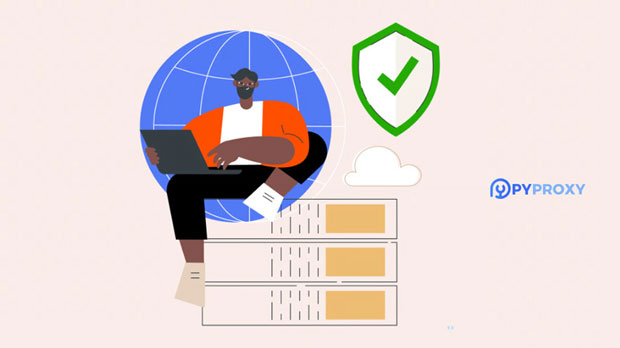Why is there a DNS leak when the proxy server IP address is changed?
When you change the IP address of your proxy server, a common issue that arises is DNS leakage. DNS (Domain Name System) leakage happens when DNS requests are sent outside the encrypted tunnel of your proxy, revealing your real IP address and browsing activity to external parties. While proxies can mask your IP address, they may not always secure your DNS requests. This vulnerability can compromise your privacy and defeat the purpose of using a proxy server in the first place. In this article, we will explore why DNS leaks happen during IP address changes, the factors contributing to these leaks, and how to mitigate the risks involved. Understanding Proxy Servers and Their Role in Internet PrivacyTo comprehend why DNS leaks occur, it's important to first understand the basic function of a proxy server. A proxy server acts as an intermediary between the user and the internet, masking the user's IP address by routing traffic through its own IP. The purpose of using proxies is to enhance privacy and security by obfuscating the user's real IP, thus preventing tracking and maintaining anonymity.Proxies, however, typically only handle web traffic. When you request a website, the proxy server forwards your request and fetches the data from the internet on your behalf. While this hides your original IP, DNS resolution, which is the process of translating website domain names into IP addresses, may not necessarily be handled by the proxy server. In many cases, it might still rely on your local DNS resolver or default DNS settings, potentially exposing your actual location and identity.What is DNS and How Does it Relate to Proxy Servers?The Domain Name System (DNS) is essentially the phonebook of the internet. It converts human-readable domain names (such as "example.com") into machine-readable IP addresses (such as "93.184.216.34"). When you visit a website, your computer sends a DNS request to a DNS server to resolve the domain name to an IP address, enabling the browser to connect to the right web server.In an ideal scenario with a properly configured proxy server, both web traffic and DNS requests should be routed through the same encrypted tunnel. This means that your ISP or any third-party observer would only see the IP address of the proxy server, rather than your real IP. However, this is not always the case.Why Do DNS Leaks Happen When Changing Proxy Server IP Address?1. Misconfigured DNS Settings: One of the most common reasons for DNS leaks when changing the proxy server IP is misconfiguration. If the proxy server is not properly configured to handle DNS requests, the DNS queries will be sent to the default DNS server set on the client’s device or network. This can result in DNS requests leaking outside of the encrypted proxy connection, exposing your real IP.2. DNS Requests Bypassing the Proxy: Some proxies, especially older or less secure versions, may not be designed to route DNS requests through their own servers. As a result, when the IP address of the proxy server changes, DNS requests may continue to go through the user’s default DNS resolver, which could be the Internet Service Provider’s (ISP) DNS or another third-party server. This bypasses the proxy entirely, leading to a DNS leak.3. Local DNS Resolver Configuration: On certain devices, the DNS resolver settings may be configured to automatically use a specific DNS server, even when the proxy is active. If the DNS resolver is not properly set to route requests through the proxy, DNS queries will leak through the default server, revealing your true IP.4. Changing proxy ip Address Without Full Configuration Updates: When the IP address of a proxy server is changed, it may require a full update of the proxy configuration, including DNS handling. If these updates are incomplete or not thoroughly checked, DNS requests may still be sent to the old server, or even bypass the proxy entirely, resulting in a leak.Consequences of DNS LeaksDNS leaks can have serious privacy implications for users who rely on proxies for anonymity. The primary risk is the exposure of your true IP address and geographical location, which defeats the purpose of using a proxy server. Even if your web traffic is hidden, anyone monitoring the DNS requests can trace your real identity based on the IP address associated with the DNS query.In addition, DNS leaks can potentially allow hackers, malicious third parties, or your ISP to monitor your online activity. This could result in data collection, surveillance, or even hacking attempts. Furthermore, when using a proxy to access geo-restricted content, a DNS leak may expose your true location, causing you to be blocked or restricted by services that rely on geographic IP filtering.How to Prevent DNS Leaks When Changing Proxy Server IP1. Configure Proxy to Handle DNS Requests: The most effective way to prevent DNS leaks is to ensure that your proxy server is configured to handle DNS queries. Some modern proxy services and tools offer DNS leak protection, ensuring that all DNS requests are routed through the proxy server. Always verify that your proxy settings are correct and that DNS queries are not being sent to external servers.2. Use DNS Servers That Support Encryption: To further enhance security, consider using DNS servers that offer encrypted connections, such as DNS over HTTPS (DoH) or DNS over TLS (DoT). These protocols ensure that DNS queries are encrypted, making it more difficult for third parties to intercept and analyze the data, even if the requests do leak.3. Check for DNS Leaks: Regularly check for DNS leaks by using online tools designed to identify if your DNS requests are being routed properly. These tools will help you determine whether your real IP address is being exposed due to a misconfigured proxy or DNS settings.4. Use a VPN in Combination with Proxy: For additional security, consider using a VPN alongside your proxy server. A VPN encrypts all traffic, including DNS queries, and routes them through secure, private servers. This can provide an added layer of protection against DNS leaks and ensure that your true IP remains hidden.5. Use a Dedicated DNS Service: If you're concerned about DNS leaks, you can configure your system to use a dedicated DNS service that supports privacy and security, such as Cloudflare or Google DNS. These services offer better privacy than default ISP DNS servers and can be configured to work with your proxy server to minimize leaks.ConclusionIn conclusion, DNS leaks during proxy ip address changes are a common issue caused by misconfigured settings, proxy limitations, and improper routing of DNS queries. These leaks can significantly compromise privacy, revealing your real IP address and location. To prevent such issues, it is essential to properly configure your proxy server, use encrypted DNS protocols, and regularly check for DNS leaks. By adopting these practices, you can better protect your online identity and maintain the privacy benefits that proxy servers are designed to provide.
2025-01-24
























































